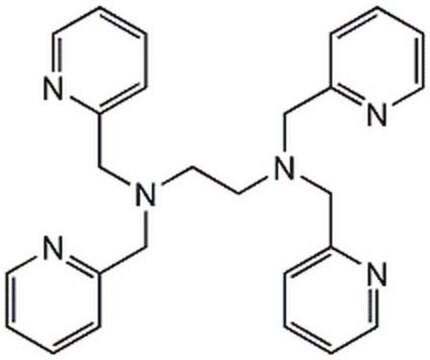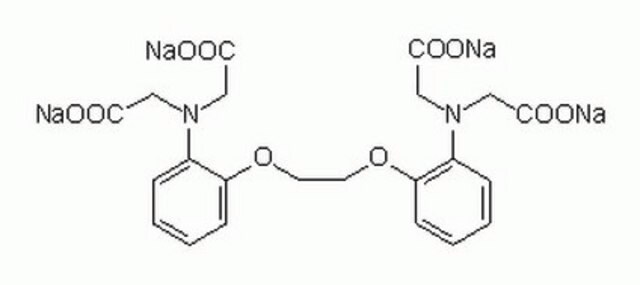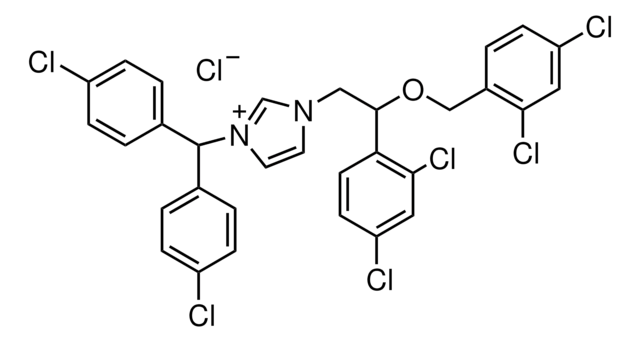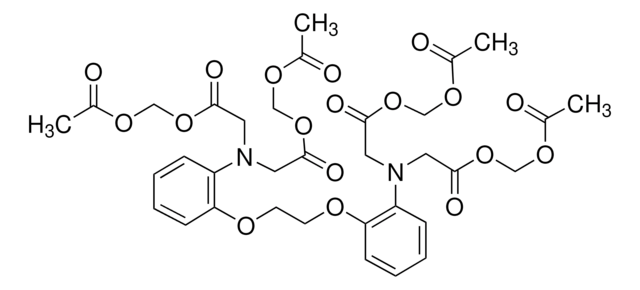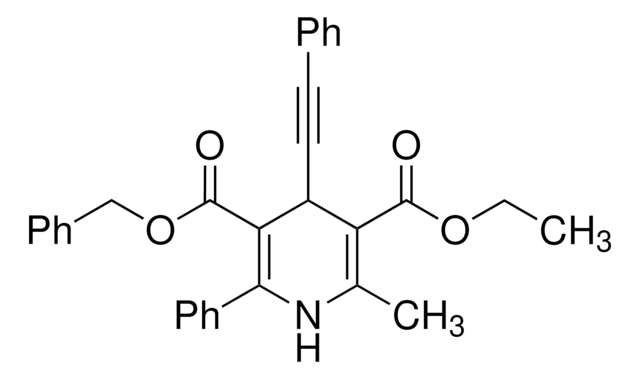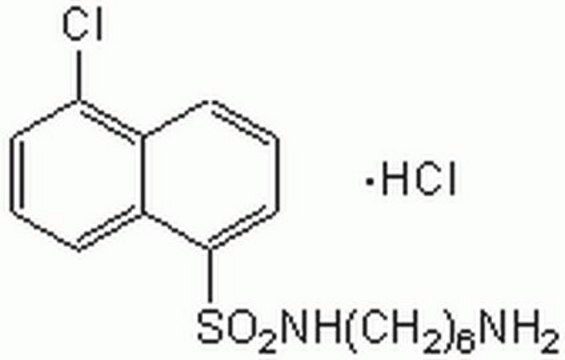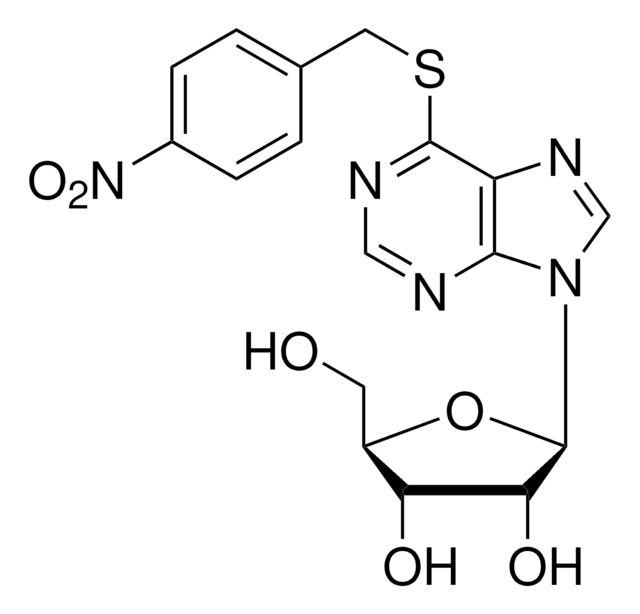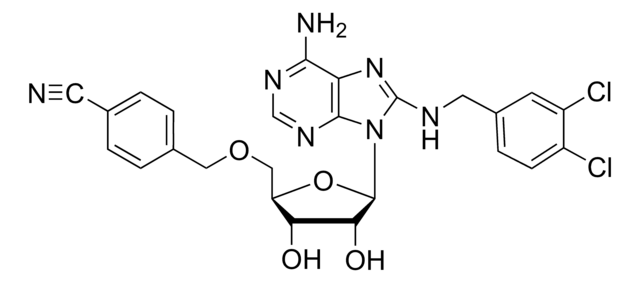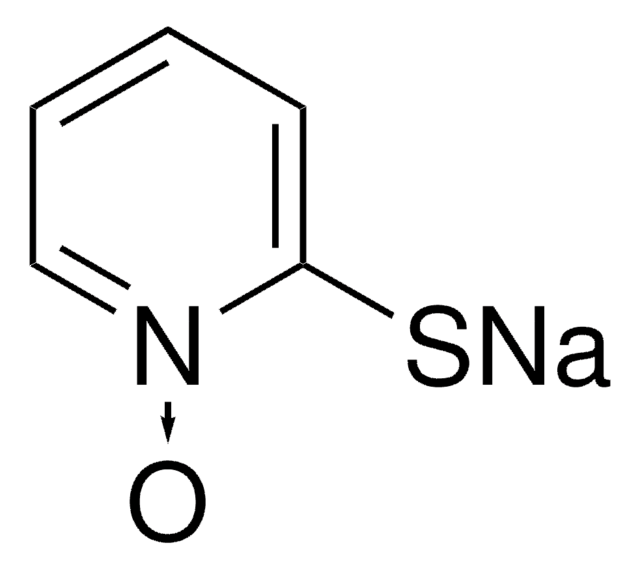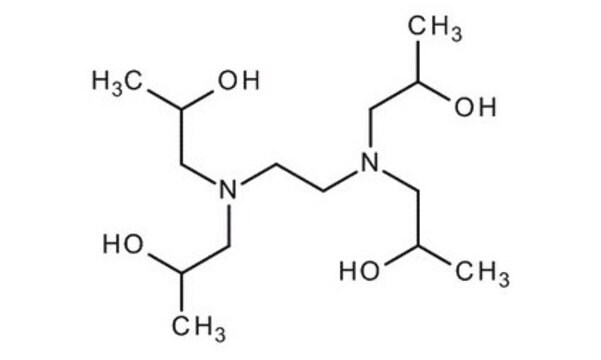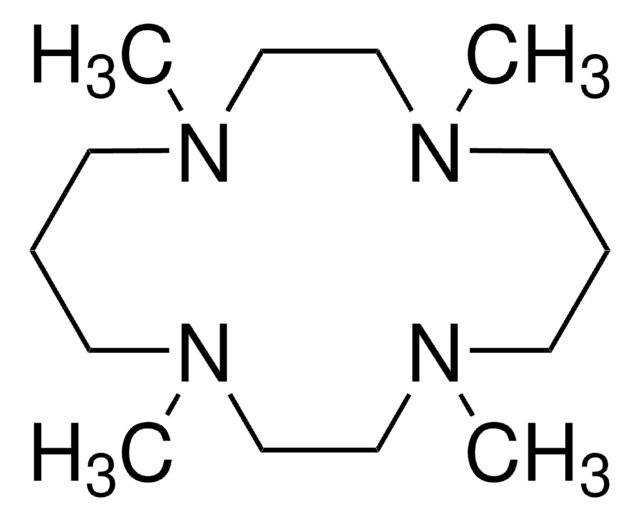P4413
N,N,N′,N′-Tetrakis(2-pyridylmethyl)ethylenediamine
≥98% (TLC), powder, membrane-permeable zinc chelator
Synonyme(s) :
TPEN
About This Item
Produits recommandés
Nom du produit
N,N,N′,N′-Tetrakis(2-pyridylmethyl)ethylenediamine,
Forme
powder
Niveau de qualité
Chaîne SMILES
C(CN(Cc1ccccn1)Cc2ccccn2)N(Cc3ccccn3)Cc4ccccn4
InChI
1S/C26H28N6/c1-5-13-27-23(9-1)19-31(20-24-10-2-6-14-28-24)17-18-32(21-25-11-3-7-15-29-25)22-26-12-4-8-16-30-26/h1-16H,17-22H2
Clé InChI
CVRXLMUYFMERMJ-UHFFFAOYSA-N
Vous recherchez des produits similaires ? Visite Guide de comparaison des produits
Application
- in the treatment of human embryonic kidney (HEK293T) cells for assessing its effect on the Jembrana disease virus (JDV) viral infectivity factor (Vif) functionality
- in P19 embryonic carcinoma cells for chelation of zinc ions released during apoptosis
- to evaluate its effect on lentiviral Vpx infection on human monocytic THP-1 cells
Actions biochimiques/physiologiques
Caractéristiques et avantages
Code de la classe de stockage
11 - Combustible Solids
Classe de danger pour l'eau (WGK)
WGK 3
Point d'éclair (°F)
Not applicable
Point d'éclair (°C)
Not applicable
Équipement de protection individuelle
dust mask type N95 (US), Eyeshields, Gloves
Faites votre choix parmi les versions les plus récentes :
Déjà en possession de ce produit ?
Retrouvez la documentation relative aux produits que vous avez récemment achetés dans la Bibliothèque de documents.
Les clients ont également consulté
Contenu apparenté
n proliferating cells, the cell cycle consists of four phases. Gap 1 (G1) is the interval between mitosis and DNA replication that is characterized by cell growth. Replication of DNA occurs during the synthesis (S) phase, which is followed by a second gap phase (G2) during which growth and preparation for cell division occurs. Together, these three stages comprise the interphase phase of the cell cycle. Interphase is followed by the mitotic (M) phase.
Apoptosis, or programmed cell death (PCD), is a selective process for the removal of unnecessary, infected or transformed cells in various biological systems. As it plays a role in the homeostasis of multicellular organisms, apoptosis is tightly regulated through two principal pathways by a number of regulatory and effector molecules.
Notre équipe de scientifiques dispose d'une expérience dans tous les secteurs de la recherche, notamment en sciences de la vie, science des matériaux, synthèse chimique, chromatographie, analyse et dans de nombreux autres domaines..
Contacter notre Service technique